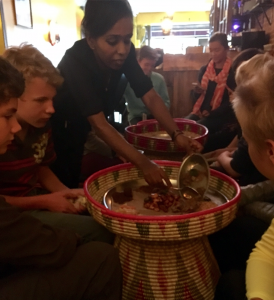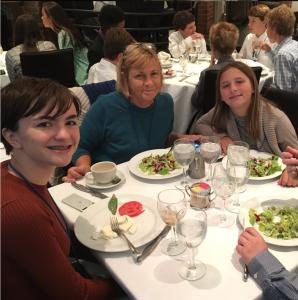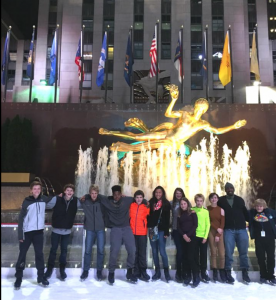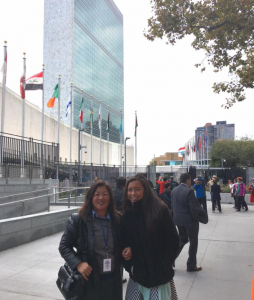Greensboro Montessori School sends tremendous congratulations and a fond farewell to our class of 2017. In our lead photo for this post, the class of 2017 stands proudly in the top row. Pictured from left to right are Isabel Egbert, Jean-Lou Paré, Jack Brown, Sophie Strugnell, Baxter Smelzer, Simon Smith, Eli Wainscott, Ya Chukasul, and Hayden Juneau. The inaugural ninth-grade class, who will return next year, kneels along the bottom row. Pictured from left to right are Alex Kotis, Owen Jacobs and Theo Fenske.
[dt_sc_h2] Sound Bites from the Class of 2017[/dt_sc_h2]
Greensboro Montessori School's graduation exercises include personal speeches from the graduates. In these moments, the audience is treated to glimpses of each graduate's past, present and future. In honor of these young adults' self-awareness, maturity, accomplishments and gratitude, we share some of the most touching thoughts shared by the class of 2017. Photos courtesy of Aris Wells Photography
[dt_sc_h5]Jack Brown[/dt_sc_h5]

"I have only been at Montessori for three years, but I have gotten the experience of a lifetime. I can say, without a doubt, that this Montessori experience will put me ahead all throughout my life. First of all, I'd like to thank my parents for sending me to this school...Like all things in life, things come and go away, sometimes even too quickly. And when I found my grade the oldest one in Montessori, I knew it had been too quick. Although I have been dreading leaving this school, I am also looking forward to the upcoming year."
Jack's next stop: Grimsley High School
[dt_sc_h5]Ya Chukasul[/dt_sc_h5]
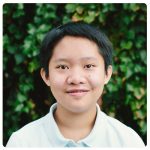 "Now Middle School. Nothing has changed a lot about me; I'm still quiet as I could ever be. Old friends were still there for me, so I felt safe. Things changed here though. Assignments got more difficult and [there were] projects I thought I would never be able to do. From creating a wolf suit on stilts, to creating costumes, to creating a movie. Teachers in Middle School: Jonathan, Doug, Deirdre, Dean, Jenny, Sandra, Matt and Keisha. Without your help, I wouldn't be on this stage today. Middle School felt just like family."
"Now Middle School. Nothing has changed a lot about me; I'm still quiet as I could ever be. Old friends were still there for me, so I felt safe. Things changed here though. Assignments got more difficult and [there were] projects I thought I would never be able to do. From creating a wolf suit on stilts, to creating costumes, to creating a movie. Teachers in Middle School: Jonathan, Doug, Deirdre, Dean, Jenny, Sandra, Matt and Keisha. Without your help, I wouldn't be on this stage today. Middle School felt just like family."
Ya's next stop: Weaver Academy for the Performing and Visual Arts and Advanced Technology
[dt_sc_h5]Isabel Egbert[/dt_sc_h5]

"Before I do anything, I need to thank my family. Grant, you made me who I am in ways you can't even understand. You are always there for me, and I love you. Mom and Dad, thank you for putting me in this school and for supporting me in everything I do...Eighth grade is a confusing, scary fever dream. Everything stops being just a thing and becomes your last thing. Your last Marketplace; your last Land trip; your last Advisory; [your] last time in CASA; until finally, you're standing here for the last time. Thank you all for everything."
Isabel's next stop: Weaver Academy for the Performing and Visual Arts and Advanced Technology
[dt_sc_h5]Hayden Juneau[/dt_sc_h5]

"In his final year at this school, this kid, alongside his partner in crime, Owen Jacobs...started to run everything tech related, doing things like being the first students to run [theatrical productions] by themselves. This kid, in his final year, found out what he wanted to be. He found out what he was skilled at, and here he is, standing on a stage, the last day he will be a student here, telling you about the last three years of his life in the third person. How - meta - is - that?"
Hayden's next stop: Weaver Academy for the Performing and Visual Arts and Advanced Technology
[dt_sc_h5]Jean-Lou Paré[/dt_sc_h5]

"It took a little bit of time to adjust to the new homework load, but once I got past that, I had lots of fun in Jonathan's long-term [creative labs] projects, Dean's science labs, and Doug's math classes. I also had a blast at the land helping the Racoon tribe set up the Tipi, make a fire, and the fun job of washing dishes. I also enjoyed the woodworking rotation...Thank you to everyone that has helped make my experience at GMS the best it could be and making it possible for me to attend the STEM Early College next year."
Jean-Lou's next stop: STEM Early College at NC A&T State University
[dt_sc_h5]Baxter Smelzer[/dt_sc_h5]
"After 12 years of the Greensboro Montessori School, I am definitely going to miss it. Leaving can be a scary and an exciting time. And I have had not only amazing relationships with friends throughout the years, but also with the teachers. You couldn't ask for more involved and caring teachers. Teachers, staff, and friends all in [an] awesome Montessori environment that all helped me grow to be ready for the next step in my life. After being here, I look around and realize I am ready. I have been well prepared and have learned the skills I need to move forward."
Baxter's next stop: Page High School (pre-IB) or Weaver Academy for the Performing and Visual Arts and Advanced Technology
[dt_sc_h5]Simon Smith[/dt_sc_h5]
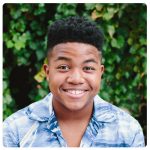
"I have spent..12 years of my life in this school and sometimes I gotta ask, 'Is this the real life or is [it] just fantasy?' This school has been amazing to me from the teachers to the staff, and this place has most definitely given me its all...A little known fact about me..I don't like change. But life forces you to change whether you like it or not...You just have to adapt."
Simon's next stop: Weaver Academy for the Performing and Visual Arts and Advanced Technology
[dt_sc_h5]Sophie Strugnell[/dt_sc_h5]

"My experience at GMS has definitely been special...Learning in [a] Montessori environment is a lot more free. There aren't as many guidelines, and it's more based around genuine curiosity. I think in Montessori there are a lot more lessons that are being learned, and there are a lot of life skills that are involved. I've really enjoyed my time here and have made many memories with many people. Even though I've only been here one year, I'm gonna miss everyone so much, but I'm excited to see what's in store for me next."
Sophie's next stop: Northern Guilford High School
[dt_sc_h5]Eli Wainscott[/dt_sc_h5]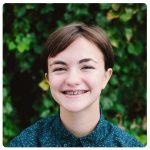
"My final word describes my Middle School experience is 'nuevo,' which means 'new' in Spanish. Everything is new here. You are thrust into projects and situations that you've never experienced before, and it's blissfully confusing to figure it out, solve the puzzle, get rid of the grit on the lens to see the full picture. I've done it all now, however. I've planted microgreens; I've led a group to be saved by aliens; I've branched out to new people, new groups of people; and I've learned by this. By every moment, every decision, I've grown as a person."
Eli's next stop: Weaver Academy for the Performing and Visual Arts and Advanced Technology
<hr>
[dt_sc_h2]Looking Ahead to the Class of 2018[/dt_sc_h2]
In 1997, Greensboro Montessori School graduated its first class of three eighth-grade students. It seems fitting on the 20th anniversary of that historic occasion, we are proudly introducing the School's first class of ninth-grade students, and it is also comprised of three students. Greensboro Montessori School is proud to announce the intelligent, talented, creative and courageous young men who are boldly pioneering the School's ninth-grade program.
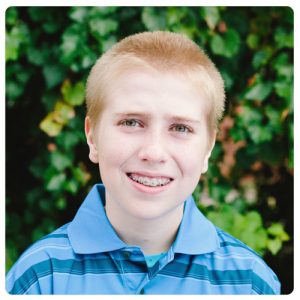
Theo Fenske
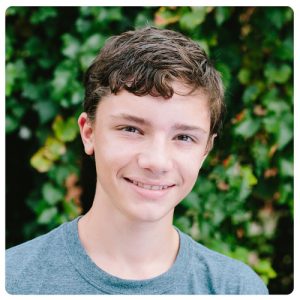
Owen Jacobs
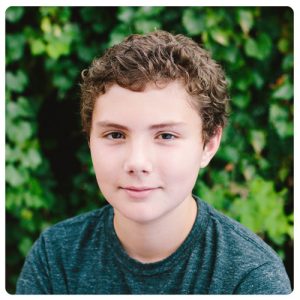
Alex Kotis
We recently began a discussion on the quintessential similarities between computational thinking and the Montessori method. The three-part blog series is inspired by a recent New York Times article by Laura Pappano entitled “Learning to Think Like a Computer.” In our first post, we explained how even the simplest of Montessori materials teaches computational thinking skills. In this second installment, we highlight how the Montessori approach to education develops computational thinking within students.
We met with Jonathan McLean to talk about his semester-long assignment in the Middle School’s Creative Labs course. Like all classes in the Montessori curriculum, this visual and performing arts class integrates subject matter from other areas of study. More specifically, Jonathan is weaving together STEM (Science, Technology Engineering and Math) and Art History through a complex science fiction role-playing game involving student-built robots and drones. To make sense of the story and succeed in the game, Jonathan’s students must employ computational thinking skills.
Just what are these skills? In her New York Times article, Laura Papanno says they are “recognizing patterns and sequences, creating algorithms, devising tests for finding and fixing errors, reducing the general to the precise and expanding the precise to the general.”
Our middle school students are flexing all these mental muscles in a battle royale between the Drones and the Bots, the only remaining cultures in the elaborate story guiding this semester’s coursework. The setting is such: The Earth has overheated making it inhabitable for organic life. Only two warring cultures, Bots and Drones remain, but neither are safe. Volcanic activity threatens the Bots on land and atmospheric change jeopardizes the Drones in air. The Bots and Drones must appeal to an Alien culture to save them, and it just so happens the Aliens have tremendous reverence for the visual arts. As the Bots and Drones compete for the Aliens’ benevolence, they must do so with aesthetically appealing design and decoration which aligns with the Aliens’ favorite artistic movements.
As the facilitator, Jonathan plays the role of the Alien culture. The students are divided into multi-age teams aligned with either the Bot or Drone culture. Jonathan gives the students data sets with which to design, build and operate their Bots and Drones. The teams consist of students in the various rolls such as officer, designer, engineer and pilot. As the students receive, process and make sense of the data they receive, they must adapt to survive. Whether either or both cultures escape the Earth will be determined in a three-hour Bot versus Drone showdown next week. The teams’ performances are the students’ final exam for the class (and Jonathan has a surprise finale planned for the students if they find a win-win solution for the Bots and the Drones).
Rather than dictate or force rote memorization upon their students, Montessori teachers educate through integrated experiences. Jonathan has created a fictional and engaging theme to provide a framework in which the students are able to apply real-world skills. Students are absorbing data from multiple sources to identify problems, understand the scope of the problems and develop and test solutions. Additionally, Jonathan is purposefully withholding information forcing the students to uncover new information and draw conclusion on their own. Harkening back to Laura Pappano’s words about computational thinking: “Concealing layers of information makes it possible to get at the intersections of things, improving aspects of a complicated system without understanding and grappling with each part. Abstraction allows advances without redesigning from scratch.”
If all of this sounds like a lot of fun, it is. Our middle school students are learning science, technology, engineering and math in their visual and performing arts class. If a student loves art, he can pursue this interest through the final appearance of his Drone, but he must also ensure aesthetic enhancement doesn’t impact physical performance. On the contrary, if a student loves engineering, she can fuel her curiosity through building her Bot, but the structure must accommodate one of the Aliens’ preferred art movements, for instance, Cubism.
In most schools throughout the country, these two students couldn’t thrive in the same class, but the Montessori method demands they both succeed by allowing them to pursue their passions through integrated curriculum and independent study. No single class takes place in a vacuum of learning, and students must carry their knowledge and experiences from one class to another. Ultimately, it’s learning how to think (like computational thinking skills), versus what to think which prepares these students for a lifetime of achievement.
As people learn that Greensboro Montessori School will offer ninth grade beginning in 2017, they ask, “Why are you offering ninth grade? Aren’t your students ready for high school?”
The fact is, our graduates are more than ready for high school. Our middle school program is highly effective at preparing students for a lifetime of achievement, and the qualities of our program look exactly like the middle school described by Dr. William M. Alexander (1912–1996). Alexander, who is widely recognized as the “father” of the American middle school movement, said good middle-level schools (called junior high schools at the time) offered “more of the freedom of movement they need, more appropriate health and physical education, more chances to participate in planning and managing their own activities, more resources for help on their problems of growing up, and more opportunities to explore new interests and to develop new aspirations.”1
Therefore, the question should not be whether Greensboro Montessori School’s middle school is effective. Instead, it should be, “How effective is ninth grade in high school?” Data and educational trends indicate that today’s high school fails to meet the developmental needs of the ninth-grade student.
“Ninth Grade: The Most Important Year in High School” was published on November 1, 2013 on The Atlantic’s website. It’s premise flows from recent research that finds “ninth graders have the lowest grade point average, the most missed classes, the majority of failing grades, and more misbehavior referrals than any other high-school grade level.” The article’s author, Michele Willens, writes, “Not only are youths entering the intimidating institution that is high school, they are experiencing the usual adolescent angst and depending on poor decision-making skills. ‘Students entering high school—just at the time brains are in flux—still have the propensity to be impulsive and are prone to making mistakes,’ says Washington D.C. psychoanalyst Dr. Linda Stern. ‘They are therefore experimental and trying to separate…Put all that together with raging hormones, the normal academic pressures, and meeting a whole new group to be judged by.’”
A blog from Public School Review further explores how the traditional ninth-grade setting impacts adolescents and how “many schools are restructuring their programs so that ninth graders are in a separate setting, apart from the larger high school community.” This trend has taken hold to serve ninth graders’ “distinct needs,” and researchers at Boston College have already determined the effectiveness of the model. “Results from the study show that, overall, the isolation of ninth graders in ‘a separate building, wing or floor eases the transition to high school.’ Paired with this, ‘Ninth grade students benefit by building relationships with peers in the same grade,’ as students, teachers, and [administrators] reported fewer concerns of bullying by older students.”
As Montessorians, when we combine this research with our own knowledge of Dr. Maria Montessori’s four phases of development, we proclaim with certainty that offering ninth grade is the right thing to do for students and their families.
During her groundbreaking studies, Dr. Montessori defined four phases of development in a child’s journey to adulthood: the absorbent mind from zero to six; childhood from six to 12; adolescence from 12 to 18; and the young adult from 18 to 24. Within each phase, Dr. Montessori uncovered two distinct, three-year learning cycles (or subphases) based on sensitive periods of growth and development shared among the age group. The three-year cycle results in multiage classrooms where skills and concepts are introduced, explored and mastered through consecutive years of learning. The three-year cycle also reinforces student leadership through social development.
The adolescent phase of development is unique. Dr. Montessori said, “The third period goes from 12 to 18, and it is a period of so much change as to remind one of the first [period from ages zero to six]. It can again be divided into two subphases: one from 12 to 15, and the other from 15 to 18. There are physical changes also during this period, the body reaching its full maturity."2
The first adolescent subphase from 12 to 15 equates to seventh, eighth and ninth grades. Dr. Montessori would advocate that ninth graders – based on their collective social, emotional, mental and physical development – should be leaders in a multiage grouping with seventh and eighth graders. She would further argue their minds and bodies are better served when positioned as mentors.
Graduates of Greensboro Montessori School thrive in four-year high schools. We count multiple valedictorians, salutatorians and Morehead Scholars among our alumni, and we know some students will continue to graduate in eighth grade and matriculate beautifully into private and public high schools. But Dr. Montessori’s developmental phases and today’s educational research also tell us high school isn’t meeting the needs of ninth graders. As a member of the Greensboro community, leaders in the field of education, and stewards of our students’ education, we have an obligation to offer ninth grade. Not because we think students will have a poor experience elsewhere, but because they will be better served by the ninth-grade experience at Greensboro Montessori School.
1Alexander, William M. “The Junior High School: A Changing View.” Tenth Annual Conference for School Administrators: A National Conference on the Junior High School, July, 1963. Cornell University, Ithaca, NY. Keynote Address.
2Montessori, Maria. The Absorbent Mind. 1949.
With Greensboro Montessori School's tuition payments dedicated to covering Greensboro Montessori School’s operating expenses, grants from the Annual Fund provide the necessary resources to make our School more than excellent - to make us truly exceptional. Through the benevolence of parents, alumni, community partners and friends of the School who give to the Annual Fund, Greensboro Montessori School is able to award grants biannually to teachers and students with specific classroom needs or transformative ideas or both!
Current year grants are funded by the previous year's giving. Contributions generously given and humbly received from last year's Annual Fund have begun taking shape through five grants awarded this fall. They range from simple classroom enhancements for our littlest students to significant technology investments for our elementary programs to supplies for creating a new ecosystem on campus (starring chickens) for our oldest scholars.
- Better Sleep for Growing Toddlers: The Academic-Day Toddler class received three new, high-quality Roman shades with blackout liners to help students get better sleep during nap time. While shades may seem simple to us, anything to promote sleep for our littlest students is transformative. The National Sleep Foundation says, "sleep is especially important for children as it directly impacts mental and physical development...During the deep states of [Non-Rapid Eye Movement] sleep, blood supply to the muscles is increased, energy is restored, tissue growth and repair occur, and important hormones are released for growth and development.
- Reading and Technology Resources for Lower Elementary: With four new Dell Chromebooks and a Raz-Kids subscription, the Lower Elementary program has increased access to age-appropriate, education-based technology. With dedicated laptops in the classroom, students will learn techniques for effective and safe online research and word processing skills. They will also be able to easily practice coding and have seamless access to their Raz-Kids online reading comprehension program. Furthermore, the use of PCs in Lower Elementary prepares students to be "bilingual" in the computer world. In many instances, we as adults use Apple products at home and PCs at work, or vice-versa, so ensuring our student have access to both platforms is important.
- iPads for Elementary Artists: In a continuation of Katherine Gwynn's exploration of the symbiotic relationship between creating with technology and hands-on art making, Greensboro Montessori School's art studio is now home to five iPad Airs and an iPad Pro. Students will integrate drawing, painting, digital photography, digital storytelling, animation and more through these new resources exclusive to our art curriculum.
- Chickens for Middle School Entrepreneurs: After 18 months of planning by students in the R&D (research and development) career track, the Middle School is developing a new ecosystem on campus for chickens. Working closely with Aubrey Cupit, Greensboro Montessori School's garden manager and owner of Gate City Harvest, Middle School students are building a mobile chicken coop, complete with a heat lamp, waterer and feeder for six chickens. Egg production will support the Land Lab, Maria's Café and other microeconomy programs. The coop will also include a technology cart with solar panels to power the coop's heat lamp. The mobile solar panels will also complement science lesson and provide a new power source at the Land.
- Ice for Bumps, Bruises, Food Prep, Entertaining and More: Until recently, we've been stocking our freezer with bags of ice. With a new industrial-grade ice maker, we've traded-out the ongoing cost of purchasing ice with a once-time cost to help us make it on our own (how Montessori of us)! The new ice maker supports the entire student-population ensuring a relatively unlimited supply of ice packs for minor student injuries. This resource will also keep our water and lemonade cold for guests at community events like the Fall Festival, Green & White Bash and End of the Year Pizza Party. Lastly, the Middle School will enjoy easy access to ice for Maria Café and trips to the Land.
Our fall grants are as varied as they are inspiring, but there are two things which bind them all. They are not only the result of giving, but also the reason for giving.
For everyone who has given in the past, is giving today or will give in the future, thank you for supporting Greensboro Montessori School. We are who we are because you have invested in us, and we promise to pay it forward by investing everything we can and all that we have in our students.
We all know about the many benefits of reading books with your child each day. But did you know that children also reap incredible rewards when we put the books aside and tell stories the old-fashioned way, in the ancient oral tradition? Many parents are surprised to learn that even young toddlers can sustain attention for extended periods of time to stories told aloud - without pictures, screens or sound effects. Here are just a few of the benefits of storytelling:
- Builds language skills by enabling toddlers to focus on vocabulary, inflection, dialect, and plot elements without distracting stimuli
- Enhances imagination as children form their own mental images of characters and events
- Builds listening and attention skills, preparing children for longer and more complex lessons as they progress through school
- Develops memory skills, as children retain character names, traits, and events without the assistance of visual aids
- Promotes bonding between the child and the caregiver
We don't have to have an encyclopedic knowledge of folk tales to begin telling stories aloud. Old standbys like The Three Bears, The Gingerbread Man, and Red Riding Hood delight today's toddlers just as they have for generations. We can even share family anecdotes, or stories about things that happened to us as young children. This wonderful article from the National Association for the Education of Young Children has more information and tips for choosing tales to share with your child: Oral Storytelling: Building Community Through Dialogue, Engagement and Problem Solving
In Upper Elementary science classes this trimester, our fourth and fifth level students have completed an in-depth unit on the human brain. They began by studying the different parts of the brain and their specific functions, and then they applied their new knowledge to learn how to strengthen their own brains. These 10 and 11 year olds took their studies one step further and delved into what current brain research teaches us about how we can maximize our own learning.
Students explored the seminal research of Stanford University professor, Dr. Carol Dweck, who coined the term "growth mindset." Dweck's research reveals that student achievement is directly related to a person's beliefs and attitudes about the value of hard work. Our Upper Elementary students learned about the attitudes that comprise a growth mindset and discussed how their own beliefs and attitudes affect their ability to learn.
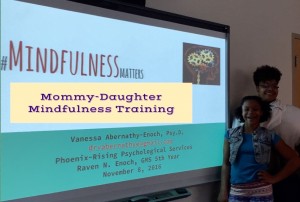 As a culminating activity, Upper Elementary hosted a special workshop on the practice of mindfulness as a tool to optimize brain function and reduce stress. The workshop was developed and presented by classmate Raven Enoch and her mother, Dr. Vanessa Abernathy-Enoch. This mother-daughter team shared a multi-media presentation on how the brain and body react to stress and the common sources of stress. They also led the students and faculty in basic mindfulness exercises they can use at home and at school.
As a culminating activity, Upper Elementary hosted a special workshop on the practice of mindfulness as a tool to optimize brain function and reduce stress. The workshop was developed and presented by classmate Raven Enoch and her mother, Dr. Vanessa Abernathy-Enoch. This mother-daughter team shared a multi-media presentation on how the brain and body react to stress and the common sources of stress. They also led the students and faculty in basic mindfulness exercises they can use at home and at school.
To learn more about how to promote mindfulness for yourself and your child, check out this booklist.
To recap their presentation and to demonstrate the importance of parent-child conversations about healthy living, we invited Raven (fifth level student) to interview her mom on the practice and health benefits of mindfulness. See the interview below.
Raven: Mom, what is Mindfulness?
Vanessa: In our workshop, #MindfulnessMatters, we talked about mindfulness as a mental state of awareness and the practices that promote such awareness: a moment-by-moment awareness of our own experience (e.g., thoughts, feelings, bodily sensations and surrounding environment) without judgement.
Raven: How does Mindfulness help with stress?
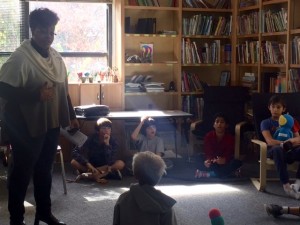 Vanessa: Well, stress is a normal part of life and a necessary part of growing, even in childhood. Stress is simply our AUTOMATIC physical and emotional reaction to life's demands or challenges. Healthy amounts of stress can motivate us to take action. Chronic stress can lead to distress and eventually different types of problems and even illness (e.g., physical, interpersonal and mental). When life's demands exceed our ability to cope with those demands, it can be taxing to our body and mind. Mindfulness practices help to target our automatic and involuntary stress response to prevent or reduce the negative impact of stress and increase coping. Some of our automatic responses to stress include trouble concentrating, inability to relax, muscle tension, and increased heart rate.
Vanessa: Well, stress is a normal part of life and a necessary part of growing, even in childhood. Stress is simply our AUTOMATIC physical and emotional reaction to life's demands or challenges. Healthy amounts of stress can motivate us to take action. Chronic stress can lead to distress and eventually different types of problems and even illness (e.g., physical, interpersonal and mental). When life's demands exceed our ability to cope with those demands, it can be taxing to our body and mind. Mindfulness practices help to target our automatic and involuntary stress response to prevent or reduce the negative impact of stress and increase coping. Some of our automatic responses to stress include trouble concentrating, inability to relax, muscle tension, and increased heart rate.
Raven: Why is it important for kids my age to learn about Mindfulness?
Vanessa: Mindfulness and the practices that promote it can help students improve their abilities in calming their own bodies and minds. The benefits include sustaining attention, improving focus, ignoring distractions, regulating mood and emotions, improving sleep, and increasing readiness to learn. There are many, many benefits that lead to increased thriving and resiliency.
Raven: What are some exercises people can do to help with Mindfulness?
Vanessa: In our workshop we taught students a Deep Breathing exercise (slowly in through the nose and slowly out through the mouth), the 5-4-3-2-1 Relaxation Technique where you focus on your environment using 3 of your 5 senses, and an exercise in Mindful Eating.
[We were also proud to point out that Greensboro Montessori School offers students several opportunities in the course of the day to practice and promote Mindfulness, including exercise, journaling, leisure reading, listening to music, creating art and structured-free time (plus yoga in the primary program)].
Raven: How has practicing Mindfulness helped you personally?
Vanessa: Using Mindfulness practices helps me personally in many ways, including improving my memory, decreasing muscle tension, remaining calm in times of crisis and increasing assertive communication that has improved my relationships, especially with my friends and family. Most of all, it is helping me to do what I hope it will help you and your classmates do: to relate to others and myself with more warmth, acceptance and sensitivity.
GMS: Tell us how your trip started
Jean-Lou: On Sunday we flew to New York. After we checked in at our hotel, we met some of the students from other schools. There were eight or nine other Montessori schools from different states and also the Dominican Republic. There were over 150 students at the conference.
Isabel: For most of the day on Monday, we heard presentations from many different NGOs [non-governmental organizations] about the work they are doing to help people around the world. Some of the organizations were Save the Rain, Vision For and From Children, Room to Read, and HeForShe.
Click Here to view a brief clip from the NGO presentation forum. Excerpt provided by chaperone, Joan Tao.
Jean-Lou: That day at lunch we went to an Ethiopian restaurant and for dinner we ate at a Moroccan restaurant. Later that night we met up with kids from two of the other schools and had a great time ice skating in Rockefeller Center.
GMS: Was there one aspect of the trip that was your favorite or was the most memorable?
Isabel: I loved being in New York City and everything about this trip. For me, the most memorable part was visiting the 9/11 Memorial and Museum. It is hard to describe the feeling of being there, but it helped me put into perspective all of the people who lost their lives. At the memorial fountain, you can read the names of all of the people who died that day. What I thought was really cool, is that white roses had been placed by the names of people to celebrate their birthdays.
Jean-Lou: I agree that being there was hard to describe. It was just like the quote that we saw on the wall of the museum. I took a picture of it with my camera. “No day shall erase you from the memory of time.”
GMS: Tell us about your tour of the United Nations building.
Jean-Lou: We visited the General Assembly Hall and an art exhibit about clearing land mines. We saw lots of different rooms and sculptures in the United Nations building and each had been contributed by a different country. On Tuesday, we also met with delegates from the Sierra Leone mission. One of the reasons we chose their mission is because our class will be reading the book, A Long Way Gone, later this year. It's a memoir of a boy growing up during the civil war in Sierra Leone.
Isabel: The delegates from Sierra Leone told us about the history of the country and how it was founded by Portuguese explorers who gave the country its name. It means “lions in the mountains." We learned about the civil war that broke out in the 1990s and then how the Ebola epidemic impacted the country a few years ago.
Jean-Lou: Before the Ebola outbreak, they had a rapidly growing economy, but then, all of the international companies withdrew. They made some very strict health rules to help control the spread of the disease. The delegates told us about their country's current president, Ernest Bai Koroma, and how their economy is starting to recover. It was sad to learn that after the Ebola epidemic many of the children were left without parents. But the delegates told us that in Sierra Leone there is a belief that everyone in the village is responsible for raising every child.
GMS: Tell us more about what you learned from the non-governmental organizations
Isabel: Many of the people giving the presentations were college students and that made me realize you don’t have to be an adult to make a difference. Actually, there was a 15 year old girl who told us about the organization called Vision For and From Children.
GMS: Have you thought about which organization you will choose for your follow-up presentation to the community?
Jean-Lou: I hope to do my presentation on the organization Room to Read that was started in Nepal. I was surprised to learn there are schools around the world where the children don’t have any books to read. This organization provides books for schools to help children learn to read in their native language. The organization also works with the governments in those countries to help teachers and also supports the education of young girls.
Isabel: I am planning to do my presentation on HeForShe which builds awareness about the issues of gender equality and specifically getting men and boys involved in the pursuit for gender equality. I also think its cool that Emma Watson [British actor from the Harry Potter movie series] promotes this cause and is the UN Goodwill Ambassador for women.
GMS: How will you stay connected to this experience and share it with you classmates.
Jean-Lou: At the end of the conference we voted to decide which organization we would work together to support. We chose Save the Rain which builds water catchment systems for villages that don’t have clean drinking water. To start, we are planning to use the money we raise through the Middle School Rock-a-thon and the proceeds from the lunch we serve at the Greensboro Montessori School International Fair to donate to Save the Rain.
What do the oldest fabric in the world and a vintage typewriter have in common with my dentist? And what do they have to do with art? Well, I encountered each of them in the course of one week, and the intersection of these seemingly disparate things gave me an “a-ha” moment about the symbiotic relationship between creating with technology and hands-on art making in our School’s art studio.
As a mixed-media artist, I am naturally drawn to tactile, malleable, hands-on materials and adore using these materials in my lessons. If you walk into Greensboro Montessori School’s art studio, you will see a variety of rich textures, fibers, paints, clay, found objects and nature. You will also find a technology wall where one of the School’s 3D printers, a computers and iPads live. These two worlds co-exist harmoniously in our art studio and with each new day I am learning and teaching how technology and art are interwoven and applied in the world beyond the studio.
For instance, many Greensboro Montessori School faculty recently participated in an excellent coding workshop from Code.org. During this workshop I learned how coding is fun and creative and identified a great way to apply this technology in my classroom. Once armed with coding knowledge, students can practice their skills by writing an algorithm resulting in a specific design being drawn on their computer. They can bring this code to their art lesson and exchange it with another student. From there, students run each other’s algorithm to see if it produces what the creator originally intended.
Another project where technology and art intersect is stop motion animation. Students use a stop motion app on our classroom iPads to tell stories, but they also use physical objects make stop-motion animation the good old-fashioned way (by moving an object in small increments, taking photos of the object after each movement, and viewing multiple photos per second in a continuous sequence to create the illusion of motion). One of the most famous stop-motion animation films is the 1964 television special, Rudolph the Red-Nosed Reindeer. In our classroom, students manipulate KEVA planks, not wireframe figurines, to make their movies. The excitement has been great, and upper elementary students often rush back to class to ask Cathy Moses to come see their work!
Middle school students have been very helpful in teaching upper elementary students about the School’s 3D printer and 3D drawing program, SketchUp, which brings me back to my “a-ha” moment about the connection between art and technology. Within the course of one week at school I led a felting project demonstrating how to create with the oldest fabric in the world and guided lower elementary students in a freedom of speech exercise where they used a vintage typewriter to create art with their own words. I was reminded how each of these discoveries represented a technological shift at the time of their invention. At the end of the week, I went to the dentist and experienced a modern technology and art revolution in the making.
As crazy as it sounds, and as personal a story it is, my time at the dentist was real-world affirmation of the integration of art and technology. I was scheduled to get a crown and had anticipated my visit being the first of two required to complete the procedure, but then I was introduced to CAD/CAM (computer-aided design and computer-aided manufacturing) dentistry. While I was in the office, my dentist used technology to capture a 3D rendering of my tooth (CAD) and reproduce it onsite with a grinding and milling machine (CAM). While the grinding process used in my dentist’s office is different from the fabrication method used in 3D printing, the use of technology to produce sculpture in both cases highlights the inspirational interplay between technology and art. (And to top it all off, my ceramic crown was fired and glazed onsite, just like our students’ pottery is fired and glazed in our kiln!)
As we continue to create with our hands in collaborative and productive ways in Greensboro Montessori School's art studio, we will continue to grow the use of technology as well, because technology helps strengthen the development of our students 21st century skills and introduces them to career opportunities where art and technology co-exist.
If you are a parent of a Primary student then you may have wondered about the square pieces of paper with tracings of geometric shapes that your child brings home in her work folder. When she tells you what it is, you may ask her to repeat herself because it sounds like she is calling them "metal insects." Secretly, you think to yourself, "funny, these don't look anything like insects." And you would be right!
These designs are made with a fundamental Montessori material known as the Metal Insets.
The Metal Insets, predominantly found in the Primary and Lower Elementary classrooms, are used to develop a core set of skills that build upon one another in sequence. In the Primary classroom, this material is the first direct preparation for handwriting. The introduction to the Metal Insets usually follows a lot of indirect preparation for handwriting that is developed through the use of the Practical Life materials and the Sensorial materials (e.g. the three finger pincer grasp used with the small tongs, eye dropper, and knobbed cylinders aids the child in correct pencil grip).
Becoming proficient in using a writing instrument is a long process. When children work with the Metal Insets, they engage and practice a host of fine motor skills including lightness of touch, evenness of pressure, continuity of line, and control of line. Not to mention, this work also aids children in the development of concentration, memory and a sense of order (all necessary for executive function).
The physical material that is displayed on the shelf is both beautiful and organized in appearance. The Metal Inset materials consist of ten geometric shapes that each fit into a corresponding metal frame (like a puzzle piece). There are five straight-lined figures and five curve-lined figures: square, triangle, rectangle, pentagon, trapezium, circle, oval, ellipse, curvilinear triangle, and quatrefoil. The shapes correspond directly to the curves and angles found in the letters of the alphabet.
Beyond preparing and strengthening the hand for handwriting, there are 7 different presentations of Metal Insets that increase with difficulty starting with the simple tracing of shapes to the gradation, design and superimposition of shapes and colors. Lower Elementary students often revel in making intricate patterns by combining the shapes and observing their geometric proportions and relationships to one another, laying the foundation for true work in geometry.
Click here to learn more about the Metal Insets on www.montessorium.com
Few things are quite as alarming to parents as being smacked by their once-serene toddler, or watching her use aggression against another child. For so many of us, peaceful conflict resolution and gentle interactions are among the most important values we strive to instill in our children. It can be easy to wonder how toddlers in perfectly peaceful households can suddenly turn all Vin Diesel on those they love the most!
Almost all young children experiment with aggressive behaviors, even in the very best homes and toddler programs. All toddlers - even those who are never exposed to physical aggression or violent imagery - are wired to resolve conflicts in ways that are reactive and impulsive. Because they haven't yet mastered verbal communication, their hands are often the medium through which they express how they feel. On top of that, they are not yet capable of empathizing with others to understand how their actions feel to those on the receiving end. Behaviors like hitting and pushing offer a quick release to their feelings of frustration, get others out of their space - and, for bonus points, they get BIG reactions from grown-ups. Toddlers crave attention, and even the negative variety can feel gratifying. Moreover, getting an adult or another child riled up offers a little taste of POWER - a feeling that’s in short supply in a small child’s life. Therefore, toddlers will often repeat unwanted behaviors over and over just to experience that rush of emotion, and to see how the sequence of reactions plays out each time.
Your toddler knows you love him unconditionally, regardless of his actions - so you're a safe target for behaviors he wants to understand and explore, even if they are negative. In most cases, the best response is as LITTLE response as possible: "No hitting. That hurts me," then moving physically away from the child. You can say, "I can be with you when you're gentle." At school, we may ask children who are behaving aggressively to move away from the rest of the group; do some deep breathing (smell the flower [inhale], blow out the candle [exhale]); then ask them to touch our hand gently to show us they are ready to be close to others again. When they are calm, we help them to recognize the impact of their actions: “Your friend is crying. It hurt when you hit her.” Then we model the language the child might use in the future in lieu of the aggressive behavior: “You can say, ‘Move over, please.’" Toddlers learn via LOTS of repetition, so don't be surprised or discouraged if you find you are using these interventions over and over with seemingly little result. They are programmed to test certain behaviors again and again before they accept that the result is the same every time!
Of all the things we cover in the toddler curriculum, none is more important than teaching children how to exist in a community with others and resolve conflicts peacefully. Monitoring the children for their safety and well-being, and seizing every opportunity to teach prosocial behavior, is incredibly important to everyone on our Toddler faculty. With patience, good modeling, and consistency in our approaches at home and school, we can help toddlers to master alternatives to the "rough stuff" and become caring, empathetic members of our school family!

